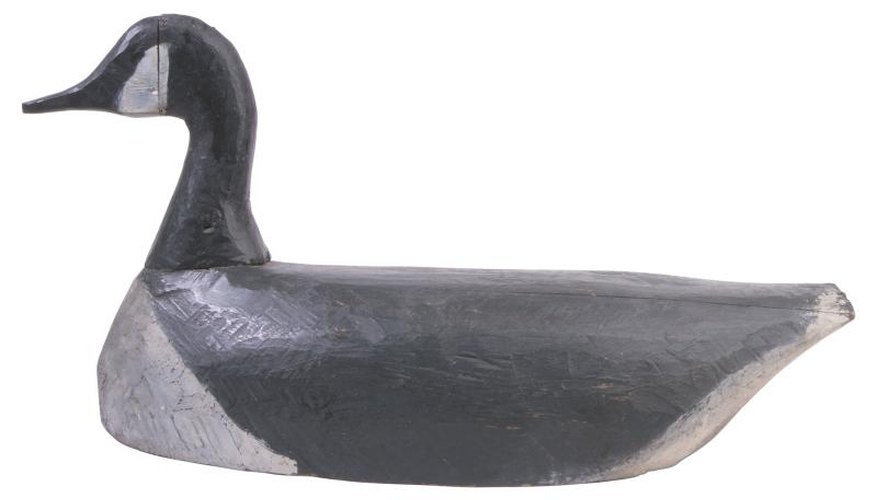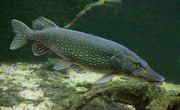
Decoys are important tools for modern waterfowl hunters, but assembling a sizable flock of commercially produced models often is expensive. Instead, make your own decoys from a variety of materials -- your creativity is the only limiting factor. Construct and use a variety of different decoy types and postures to achieve the best results.
Floating Decoys
Make floating decoys from foam buoys by cutting the buoy in half and attaching a wooden keel to the bottom to keep it floating properly. Cut out a foam or wooden head and neck and attach it to one side of the buoy. Use black and white spray paint to give the decoy a convincing color scheme. Alternatively, make a head and neck from foam and attach it to a plastic jug, painted black and white. Tie a tug string to several of the floating decoys so you can impart movement when ducks or geese fly overhead.
Silhouette Decoys
Alter plastic yard signs – such as those used by real estate agents – to create convincing silhouette-style decoys. Remove the plastic sheet from the metal stakes and cut it into the shape of a goose. Paint the plastic sheet black and white to match the plumage of a goose and re-attach the plastic to the metal stakes. Make several of these two-dimensional decoys to create an effective spread, and create them in a variety of postures -- such as feeding, alert and sleeping.
Full-Bodied Decoys
Full-bodied decoys look more realistic than any other type of decoy, but are the most difficult type to make. If you have the necessary artistic skill, cut a three-dimensional decoy from a block of foam and then paint it to resemble a goose. If you are an accomplished woodworker, carve decoys from basswood, give them a good paint job and then coat them in a waterproofing sealant.
Filling Out the Spread
While you want the majority of your decoys to accurately resemble geese, it is often wise to fill out your spread with a few simple decoys that may not look exactly like geese, but help to create the impression of a vibrant flock. For example, cut out a goose head and neck from a piece of cardboard. Use black and white paint to color the cardboard like a goose’s head. Attach the goose head to a straightened coat hanger, which will serve as a stake for the decoy. Tape, tie or glue a black trash bag to the stake and paint a white tail patch on the end. Place the decoy among your other decoys, where the wind will cause the trash bag to flap and add movement to the spread.



